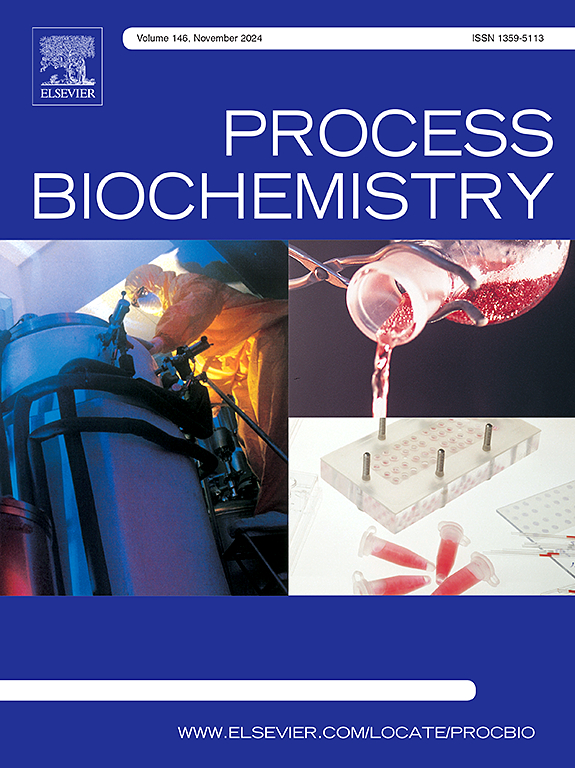Enhancing resource recovery and biomass production through microalgae-cyanobacteria binary culture for establishing wastewater-driven peri-urban biorefinery
IF 3.7
3区 生物学
Q2 BIOCHEMISTRY & MOLECULAR BIOLOGY
引用次数: 0
Abstract
Maintaining monocultures in microalgae cultivation poses operational challenges and increases the financial burden. These challenges can be mitigated by adopting microalgae-cyanobacteria binary cultures. Here, the binary culture of a microalgae Asterarcys sp. BERC16 and cyanobacterium Lyngbya birgei BERC18 were tested against various growth factors, including inoculum ratio, aeration, sterilization, higher N/P ratios, and microbial community for improved resource recovery and biomass production in unsterilized primary-treated urban wastewater. The binary culture demonstrated remarkable efficiency, achieving 97–99 % nitrate removal, reducing its concentration from 210 mg/L to 4.6 mg/L, along with 66 % phosphate removal and a 78 % reduction in chemical oxygen demand. It tolerated up to three times higher N/P concentrations and yielded up to 2.18-fold more biomass compared to monocultures. Notably, cultivating the binary culture in unsterilized primary-treated wastewater enhanced biomass harvesting efficiency to 71 %, attributed to the production of carbohydrate-rich exopolysaccharides. Additionally, binary cultivation significantly reduced bacterial colonies from day zero to harvesting. Preliminary characterization of the harvested biomass revealed a lipid content of 45–53 % and a protein content of 40 %, underscoring its potential for biochemical and biofuel production. This approach offers a promising pathway toward developing a cost-effective and technically viable wastewater-powered biorefinery.
求助全文
约1分钟内获得全文
求助全文
来源期刊

Process Biochemistry
生物-工程:化工
CiteScore
8.30
自引率
4.50%
发文量
374
审稿时长
53 days
期刊介绍:
Process Biochemistry is an application-orientated research journal devoted to reporting advances with originality and novelty, in the science and technology of the processes involving bioactive molecules and living organisms. These processes concern the production of useful metabolites or materials, or the removal of toxic compounds using tools and methods of current biology and engineering. Its main areas of interest include novel bioprocesses and enabling technologies (such as nanobiotechnology, tissue engineering, directed evolution, metabolic engineering, systems biology, and synthetic biology) applicable in food (nutraceutical), healthcare (medical, pharmaceutical, cosmetic), energy (biofuels), environmental, and biorefinery industries and their underlying biological and engineering principles.
 求助内容:
求助内容: 应助结果提醒方式:
应助结果提醒方式:


